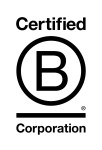While corporate treasurers are currently charged with the leading financial strategy within organizations, managing financial risks and investments, sustainability goals have emerged as a new directive for many corporations. Treasurers, with their expertise in cash management, financing and risk, are uniquely positioned to contribute to positive social and environmental impacts that yield return. Read about sustainable investing for corporate treasurers below.

Photo by Unsplash
Sustainable financial management practices have become imperative for treasury teams, allowing them to align their organizations’ long-term goals. Research from TMI indicates that these targeted investments enable treasurers to achieve better risk-adjusted returns, making sustainability an essential aspect of modern financial strategies. Furthermore, studies like the comprehensive analysis conducted by Kroll, underscore the financial advantages of integrating sustainability. Companies with higher ESG ratings consistently outperform their counterparts.
These sustainable treasury initiatives are not just a responsibility; they are a practical benefit. In this article, we will explore actionable strategies for corporate treasurers to drive significant change within their organizations. Through strategic collaboration and innovative approaches, treasurers can navigate the complexities of the modern financial landscape and create lasting positive impacts.
Table of Contents
Strategy 1: Impact-Driven Banking Diversification
The need for diversification in investment strategies is underscored by current trends in corporate treasury management. A staggering 18% of treasury teams have allocated 80-100% of their short-term investment portfolio in bank deposits, while an additional 14% have invested 60-79% in the same instrument, as revealed by a report from TMI. Diversifying investments has been used to both mitigate potential financial vulnerabilities and provide an opportunity to further incorporate sustainable investing practices at the treasury level.
Treasurers motivated to include more sustainability in their function should consider diversifying with impact-driven depository institutions. This approach involves leveraging platforms like CNote and Impact Deposits Corp. to distribute a company’s deposits across community financial institutions already aligned with corporate sustainability goals, such as climate justice, affordable housing, racial justice, and financial inclusion.
Diversification for Climate and Social Justice Initiatives
In 2022, BankFWD estimated that approximately 24% of funds lent by the six largest U.S. banks support fossil fuel interests. This suggests that for some of the country’s largest corporations, their cash holdings could constitute a significant source of emissions. The emissions funded by these investments have the potential to outweigh any reductions corporate entities have committed to in other areas. Moving corporate deposits to banks engaged in sustainable development, solar lending, or green financing, however, can result in a reduction of the associated carbon footprint by more than 60%, according to a report by the Climate Safe Lending Network, BankFWD, and The Outdoor Policy Outfit.

Bill Greenleaf, SVP of Real Estate Lending and Joey Barnes, SVP, Small Business Lending Manager. Photo credit: Virginia Community Capital / Photographer: Nick Davis Photography
Beyond mitigating environmental impact, Diversifying corporate cash holdings to hundreds or thousands of community development financial institution (CDFI) banks and credit unions holds transformative potential that includes both social and environmental impact. CDFIs are mandated to allocate at least 60% of their funding activities to low- and moderate-income populations or underserved communities. By redirecting cash holdings to CDFIs, corporations can make loan capital and other financial resources more accessible to women- and minority-owned businesses. In addition to CDFIs, low-income designated (LID) credit unions and Minority Depository Institutions (MDIS) similarly are designations earned when institutions focus support and programs on under-served groups, making them another diversification option. Diversifying with community lenders can safeguard against financial risks while also nurturing an ecosystem of sustainable and inclusive growth.
Strategy 2: Addressing Scope 3 Emissions Through the Supply Chain
One strategic avenue for treasurers to enhance their sustainability efforts lies in addressing the environmental impacts within the supply chain. Research produced by CDP highlights that GHG emissions in a company’s supply chain are, on average, 11.4 times higher than its operational emissions. At the same time, environmental risks in supply chains are projected to cost companies USD120 billion by 2026. This stark reality presents a significant opportunity for treasurers to drive positive change right at the source, within their supplier network. With increasing regulations and disclosures concerning a company’s Scope 3 emissions, addressing carbon produced by the supply chain is imperative for a long-term sustainability strategy.
Engaging Suppliers
Engaging suppliers comprehensively becomes the essential first step. Companies cannot achieve their climate net-zero targets while contributing to mass deforestation in their supply chain. High-performing companies in this area proactively request suppliers to report data and establish targets to reduce their upstream Scope 3 emissions. However, ambitious environmental action has yet to permeate the entire supply chain. CDP’s Global Supply Chain report highlights the opportunity to engage with suppliers as a solution. For instance, only 20% of companies surveyed reported data for Scope 3 Category 1 ‘Purchased Goods and Services’ emissions, and a concerning 62% aren’t engaging suppliers on this critical topic

Photo by Pexels
Treasurers are in a unique position to leverage their influence and encourage suppliers to report data and establish reduction targets. This strategic collaboration was found to support momentum and instigate meaningful change. In 2021, over 200 purchasers, leveraging a combined US$5.5 trillion in buying power, requested environmental data from over 24,000 strategic suppliers through CDP Supply Chain, underscoring the increasing momentum toward sustainability in supply chain management.
Initiating conversations and actions focused on greening their cash management, treasurers not only align their organizations with sustainable goals but also catalyze a chain reaction of environmentally responsible practices. This proactive strategy ensures that the entire supply chain, encompassing financial transactions and investments, aligns with corporate sustainability objectives.
Strategy 3: Greening Retirement Options
In 2023, U.S. employer-sponsored retirement plans amassed a staggering $11.8 trillion in assets. Yet, within this substantial financial landscape, a concerning trend persists: a significant portion of corporate pensions and 401(k) portfolios remains entangled with fossil fuel investments, raising ethical and environmental red flags.

Photo by Unsplash
This issue gains added urgency amid a changing workforce paradigm. Young professionals, notably Gen Z individuals comprising 6.1% of the current workforce (expected to rise to 30% by 2030), place paramount importance on ESG (Environmental, Social, and Governance) practices when evaluating potential employers. Simultaneously, a 2021 Morgan Stanley report highlighted that 99% of millennials express interest in sustainable investing. For treasurers, decarbonizing 401(k) and retirement options represents a strategic avenue to align sustainability efforts with the burgeoning demand for climate-friendly choices among employees.
Addressing the Challenge
To address this challenge, treasurers can champion a clear, actionable approach. Firstly, they can advocate for the integration of climate-safe bond fund options within retirement plans. These options shield employees from heightened climate risks associated with high-carbon fossil fuel investments. Secondly, treasurers should work diligently to measure and mitigate the climate risk tied to corporate bond holdings in default plan options. By implementing these changes, treasurers can not only protect employee savings but also contribute significantly to a more sustainable financial landscape.
Furthermore, engaging influential asset managers is crucial. By communicating employee demand for sustainable, climate-safe investment options, treasurers can drive transformative changes in how retirement funds are managed. Employee surveys underline the significance of these actions: nearly 75% of plan participants are willing to increase their contributions when offered sustainable fund options, reflecting a clear opportunity to enhance both financial and environmental outcomes.
Conclusion
By embracing these initiatives, treasurers can empower their organizations to navigate the financial landscape while fostering a sustainable future, embodying a crucial role in the journey toward a greener and more responsible financial ecosystem.
Disclaimer: This information should not be relied upon as research, investment or financial advice, or a recommendation regarding any products, strategies, or any security in particular. This material is strictly for illustrative, educational, or informational purposes and is subject to change. Investing involves risks, including possible loss of principal.








